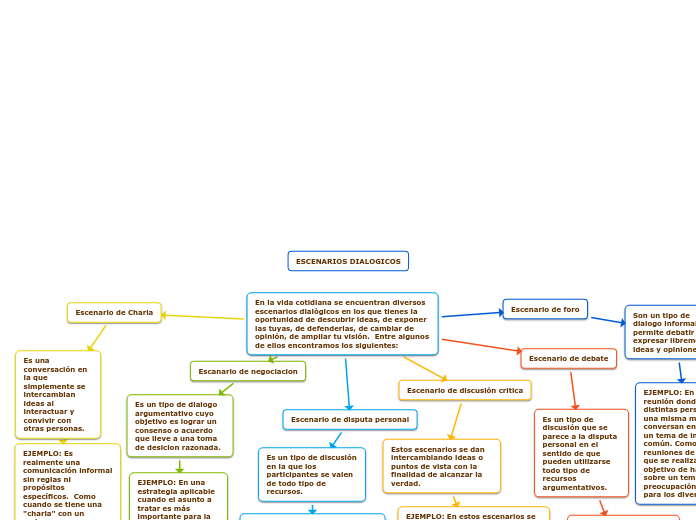ETAPAS DEL PROCESO DE NEGOCIACIÓN INTERNACIONAL
To name your story, you have to think about the overall message and what you want your audience to understand from the story. Also, make it relevant and easy to remember.
ESTILOS DE LOS COLOMBIANOS PARA NEGOCIAR
Se dividen en dos escuelas
Negocioción moderna (integrativa)
por intereses, principios, cooperativa,gana-gana o de benedicios mutuos.
Hacer ofertas razonables
Intercambiar información gradual
Establecer reglas de mutuo respeto
Preparar preguntas sobre interes
Calcular la alternativa externa
Preparar criterios objetivos
La tradicional (posicional o competitiva)
regateo, pedir mucho y despues bajarse
El gana - gana: los colombianos les gusta jugar con los puntos medios, pues el gana-gana pierde es inconcebible, prefiere siempre llegar a consensos, siempre valiéndose de la amistad que trata de construir antes, durante y después del proceso.
Siempre hay algo que perder: en algunos casos un colombiano entre en negociación, pues para él , en una negociación siempre hay algo que perder, así que prefiere actuar por voluntad propia y simplemente esperar la reacción del otro.
Sentimiento en el producto: los colombianos son muy emocionales por lo que esto puejugar a favor de que sean más flexibles a ofertas elevadas.
Improvisación: nunca espere que un colombiano le presente planes supremamente estructurados de negociación, pues les gusta hacer todo en el momento, son los dioses de la improvisación.
Amistad en los negocios: el colombiano siempre se basa los negocios primero en la amistad, por eso, no se extrañe de los formalismos excesivos que utiliza para ganarse su confianza antes de entrar en materia de negocios.
El regateo y la primera oferta: el colombiano se caracteriza por el regateo por lo que usted deberá prepararse y no ceder a la primera oferta, aquí siempre se pide rebaja cuando se les pide mucho.
CIERRE
El negociador internacional se enfrenta a dos tipos de tensión.
En el cierre actuar sin precipitación y agradecer el tiempo que se ha dedicado a obtener el acuerdo.
2. Es aquella que nos empuja a terminar la negociación antes de que la contraparte nos pida más concesiones .
1. Es la incertidumbre básica de toda negocición.
DISCUSIÓN
Comienza con las objeciones de la propuesta
Las MOU (memorandums of understanding) se trata de documentos firmados por las partes, que sirven para recoger los avances en las negociaciones.
Permiten conocer los intereses del interlocutor
PROPUESTA
Realizar la propuesta
Para fijar la posición de la salida habrá que tenerse en cuenta el margen de la negociación con el que se trabaja en el país.
Al principio de la negociación es mejor evitar los conflictos de intereses y los obstáculos potenciales.
ENCUENTRO
The ending of a story is essential. We all know that if the ending is weak, what happened before loses its importance. So make it unpredictable, but fair. A resolved ending answers all the questions and ties up any loose threads from the plot.
Encuentro con la contraparte
This is the moment when the main character surpasses the last obstacle and finally faces their greatest challenge.
The climax usually follows one of these patterns:
- realization
- resolution
- choice
Type in your answer.
Cuando se presentan la empresa y los productos hay que tener en cuenta que los atributos o ventajas competitivas más importantes difieren de un país a otro.
Ofrecer una información positiva de la empresa que representa.
El negociador debe adoptar un comportamiento que permita crear un ambiente favorable.
PREPARACIÓN
The middle of the story is where you add layers of complications that will lead to the end. Reveal more about the character's journey. Did their personality go through changes? How did they overcome the challenges? And as you build up the story’s central conflict, make it more personal to that character. Also, from the middle act, you have to lead into the final act.
Preparar la negociación
Your character(s) need(s) motivation in order to solve the challenge(s).
Con mayor profundidad y detalle habrá que preparar las reuniones
Secondary characters might also have motives that lead them to cross paths with the main character or which might trigger them to help the main character.
Cuanto mayor rigor tenga la otra parte están a la cabeza en ese sentido
Why does your character need to confront this challenge? What does he/she expect to accomplish by solving it?
See a few examples:
- will marry in 3 days
- can fix the mistakes of the past
Para proponer los objetivos es útil el modelo de clasificacion GPT (Gustar. Pretender, Tener).
Secondary characters also might have motivs beacuse of which they may cross path with main character or which might trigger them to help the main character.
Objetivos T: son los que obligatoriamente hay que conseguir.
Objetivos P:son aquellos que en condiciones normales se pretende conseguir.
Objetivos G: son los que nos gustaría alcanzar.
TOMA DE CONTACTO
In the beginning of the story (or the exposition), you will need to introduce the setting and characters. You might also want to introduce the main conflict. This part of the story is important because it gives the reader necessary background information and maybe even a first insight into a character’s personality.
Identificar la empresa
The setting (time & place) of a story can change throughout the plot.
Conseguir una entrevista
The time of the story can also change. It can describe the event of a single day or can include an entire year's plot. Anyway, don't forget to mention it.
Conocer a la persona o personas con las que se va a realizar la propueta.
Your story can take place wherever your imagination will take you to.
For example: in an elevator, in an enchanted forest, etc. Don't forget to give details of the environment each time the setting changes, otherwise, the story can be confusing. Also, mention the seasons as each of them has unique weather and events.










